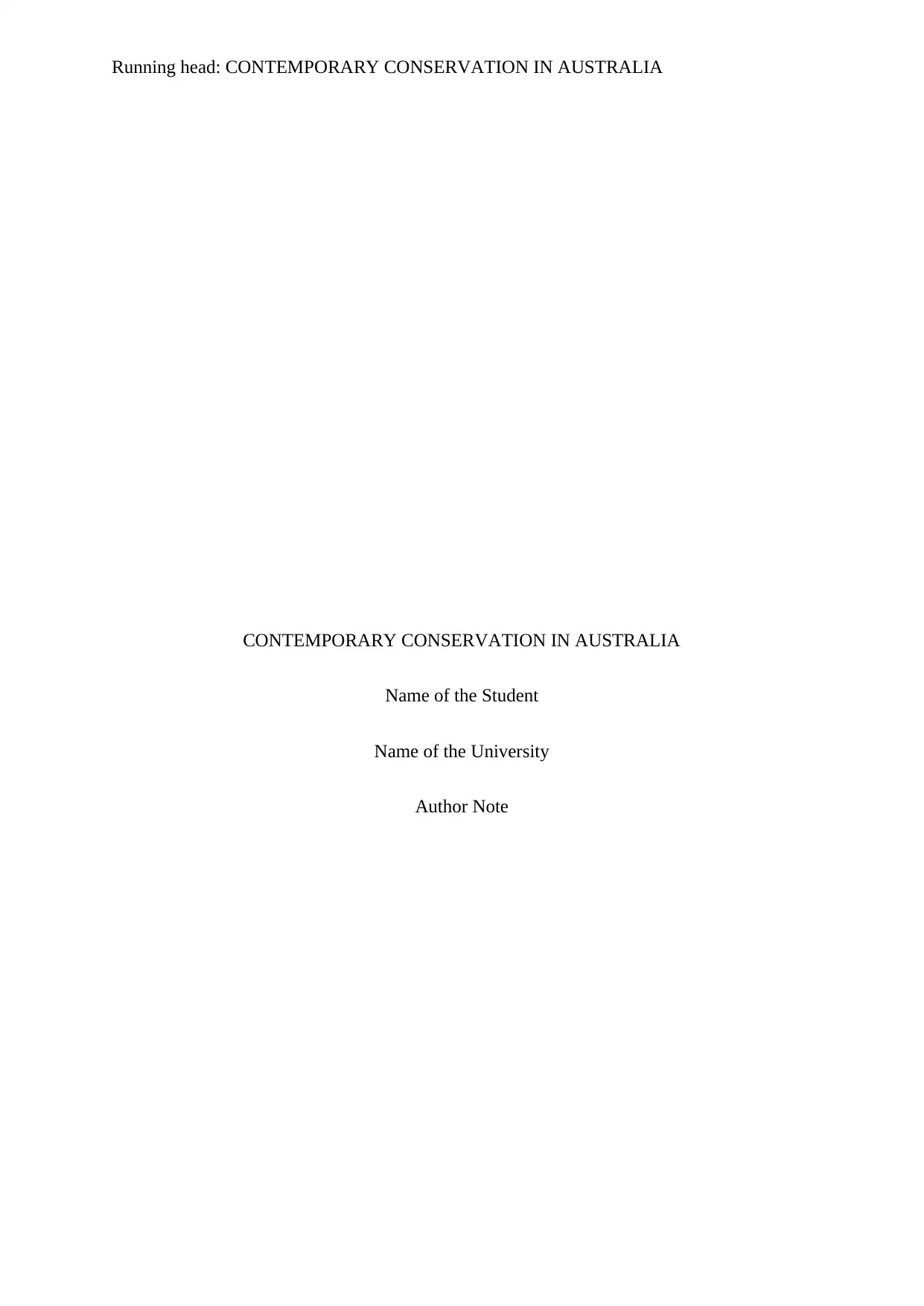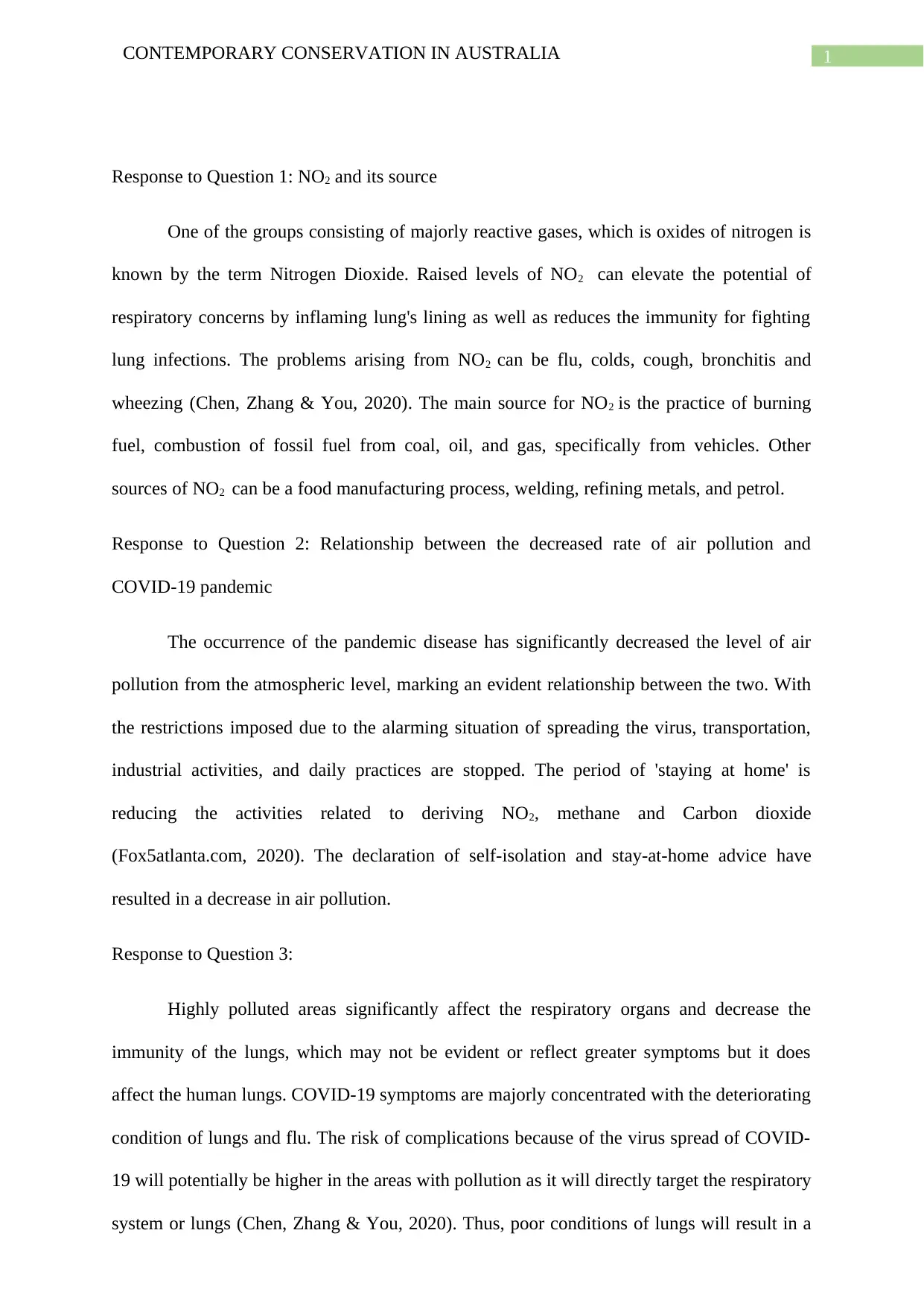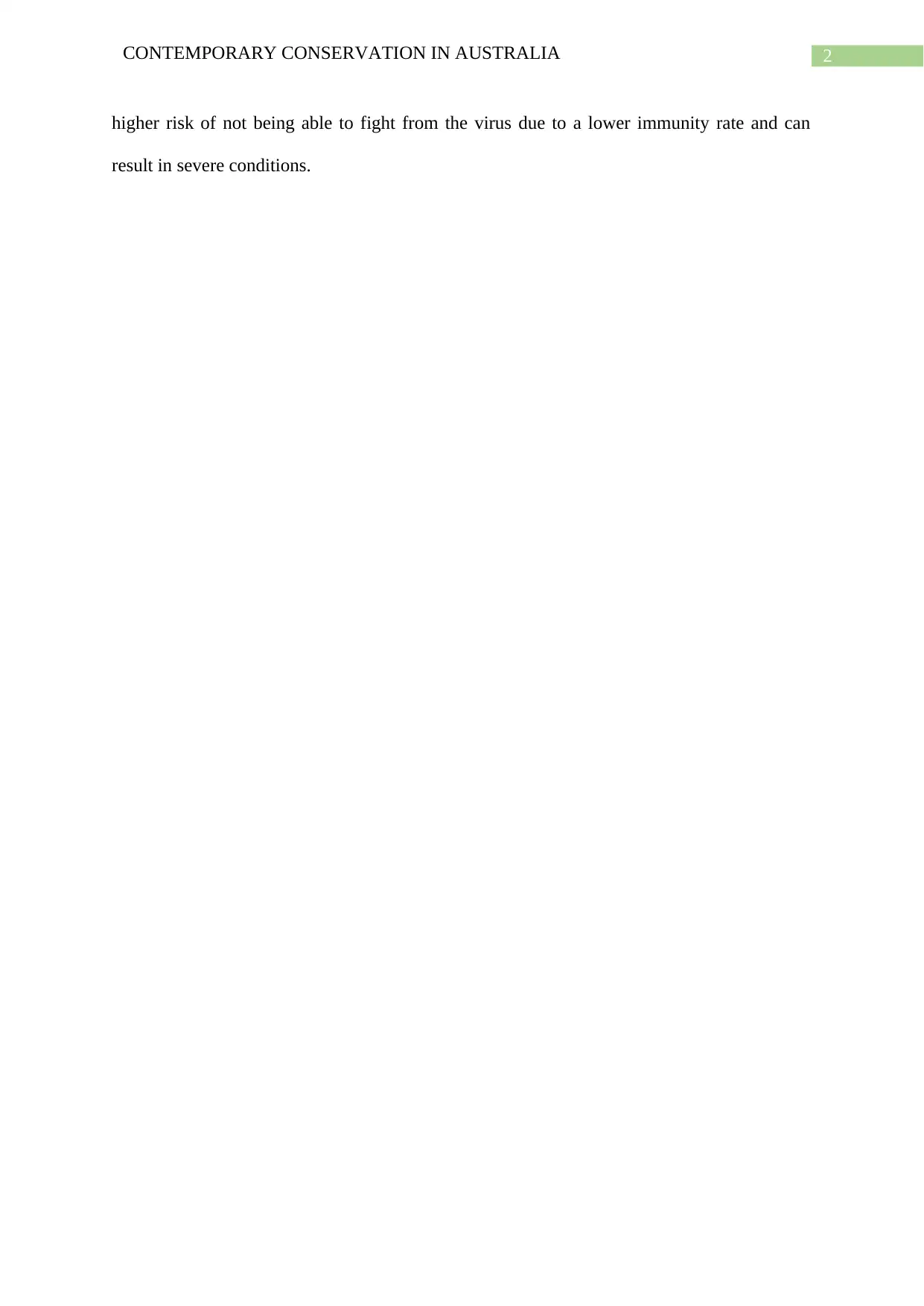Contemporary Conservation: NO2, COVID-19, and Air Pollution Analysis
VerifiedAdded on 2022/09/09
|4
|467
|24
Report
AI Summary
This report investigates the connection between nitrogen dioxide (NO2), the COVID-19 pandemic, and air pollution. It begins by defining NO2, outlining its sources (primarily fuel combustion) and the health risks associated with it, such as respiratory issues. The report then examines how the pandemic, with its associated restrictions on transportation and industrial activities, led to a decrease in air pollution levels, specifically impacting NO2, methane, and carbon dioxide emissions. Finally, it discusses the heightened risk of COVID-19 complications in polluted areas, emphasizing that compromised lung health due to pollution can reduce the body's ability to fight the virus. The report references studies and data to support its findings, highlighting the complex interplay between environmental factors and public health.
1 out of 4





![[object Object]](/_next/static/media/star-bottom.7253800d.svg)